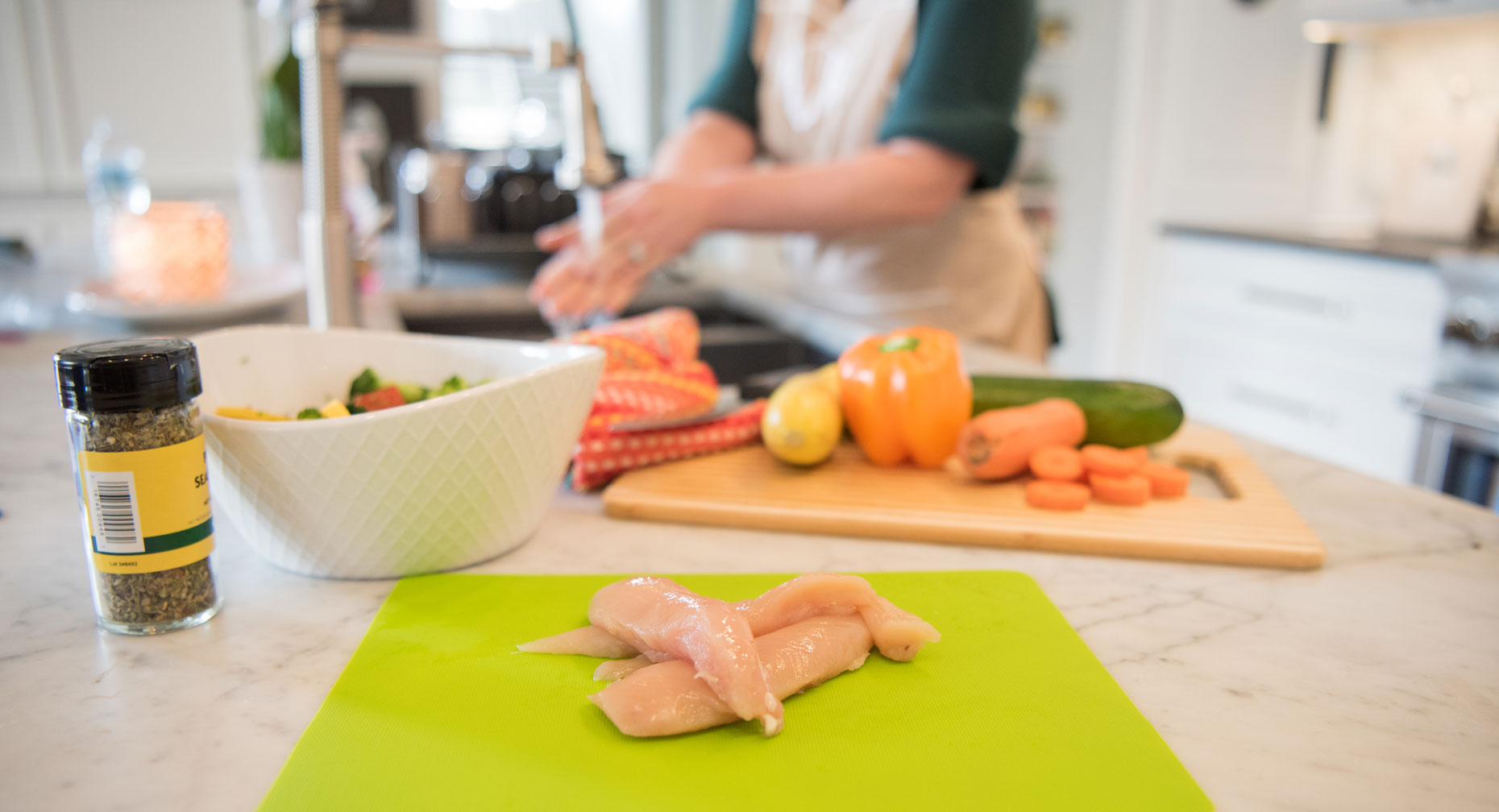Salmonella: The Raw Facts

Answer a few questions and we'll provide you with a list of primary care providers that best fit your needs.
You took a chance on slightly undercooked meat and now you’re experiencing some unfortunate symptoms. Or, you’ve heard about a Salmonella outbreak at a local restaurant you like. So you’ve got questions: What is Salmonella? What are the symptoms? How do you treat it and (most importantly) prevent it?
Salmonella is a group of bacteria that causes diarrhea (and other symptoms) in humans. It lives in the intestinal tract and spreads through contact with animal or human feces. Discovered a hundred years ago by an American scientist named Dr. Daniel E. Salmon, it causes most illness from food.
How Do You Get Salmonella?
The normal way to get Salmonella is by eating food contaminated by animal feces. Raw or undercooked animal source foods (including beef, fish, poultry, eggs and dairy) are the usual suspects. But it can also pass to foods like unwashed raw fruits and vegetables.
Thankfully, you can kill the bacteria by cooking foods like meat and eggs to a safe minimum temperature (165 degrees). And, you can avoid cross-contamination by washing your hands frequently (especially while cooking, using the restroom, changing a diaper or handling animals).
Salmonella Symptoms and Treatment
Salmonella hits between eight and 72 hours after you’re infected. These are the general symptoms:
- Fever
- Diarrhea
- Stomach cramps
- Vomiting
- Nausea
Since Salmonella is not the only condition with these symptoms, your doctor can only diagnose it by testing a sample of your stool.
Wash your hands with soap and warm water for at least 20 seconds after handling food (or doing anything concerned with bathrooms, diapers or animals).
Most healthy people get better within five to seven days. Your main concern needs to be drinking fluids. Be on the lookout for dehydration symptoms: dry mouth, dark urine, decreased urination. You probably won’t need antibiotics unless you have other health issues.
While most people get better without any medical treatment, Salmonella can be a deadly threat to infants and young children, pregnant women and their babies, as well as older people and those with weakened immune systems (like those with cancer, HIV/AIDS, diabetes, kidney disease and transplant patients). Contact your doctor if you think you may have a Salmonella infection.
Simple Steps to Avoid Salmonella

- Cook foods to minimal safe internal temperature.
Beef, pork, lamb and veal chops and roasts need to be cooked to 145 degrees. Ground meets must be cooked to 160 degrees. Poultry should be cooked to 165 degrees. Cook eggs until they are 160 degrees (stay away from over-easy, runny yolks).
- Wash hands and surfaces frequently.
Wash your hands with soap and warm water for at least 20 seconds after handling food (or doing anything concerned with bathrooms, diapers or animals). Wash cutting boards in hot soapy water. It’s smart to have one cutting board devoted to meat and the other for fruits, vegetables and other foods.
- Avoid cross-contamination.
Notice where you are putting foods while you are cooking. Don’t put another food on a plate where you have had raw meat. As always, wash your hands often.
- Put foods in the refrigerator promptly.
Keep foods at home safe by putting them in the refrigerator or freezer within two hours (or one hour if the temperature is about 90 degrees). Thaw foods in the refrigerator, in cold water or in the microwave.
Answer a few questions and we'll provide you with a list of primary care providers that best fit your needs.
Source: Centers for Disease Control and Prevention; USDA




